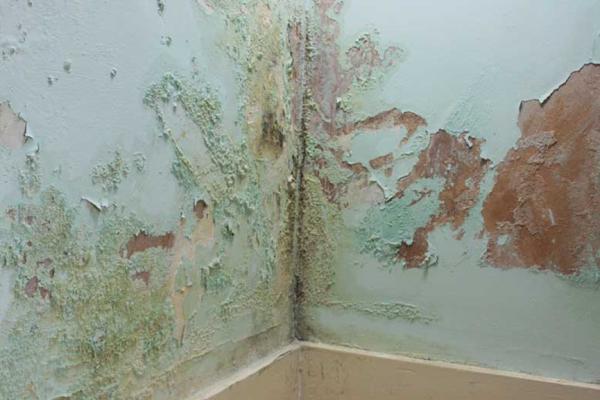3 Effective Ways to Prevent Damp Walls During the Monsoon

According to DBI, Damp is one of the most common, and often expensive, problems experienced by homeowners and landlords. Dampness can not only cause property damage, but it can also lead to medical problems for family members or renters living on the premises. Fortunately, there are lots of alternatives to damp-proofing your house, which we’ve covered in this article.
What causes dampness?
There are three primary causes of dampness in the house, and a correct diagnosis is critical to obtaining the right remedy.
Rising damp
When the water rises from the ground below, it is known as rising damp. Most homes have damp-proof courses (DPCs), which are protective membrane that keeps water from seeping through the brickwork.
Some older houses are more prone to rising dampness than many modern dwellings because the DPC has outlived its useful life, or because no DPC was ever installed.
Damp-proof courses (DPCs) became necessary in property construction in 1875, but many properties constructed prior to that date have inadequate DPCs. Signs of increasing dampness to look for include:
- Tide marks on internal walls, usually from the skirting board to about 1m in height.
- Salts may accumulate on the walls.
- Internal wall discolouration or yellow patches that are chilly and damp to the touch
- Flaking paint or peeling wallpaper
- Skirting boards that are crumbling
- Plaster that is flaking or bubbling
- If you notice a musty or damp odour,
- Black mildew is a problem that affects the walls and ceiling.
Penetrating damp
When moisture penetrates a property owing to a fault or problem, it is known as invasive damp. Roofs that are damaged, leaking downpipes and gutters, and incorrect pointing are all common offenders. Penetrating damp is sometimes mistaken for rising damp, but there are several key distinctions between the two.
Penetrating damp, on the other hand, maybe seen in a variety of places: around windows and doors, behind skylights or other openings in walls that let water into rooms, and so on. It can appear higher up than rising damp – for example, on ceilings and top corners of rooms.
Look out for:
- Blisters on plaster or salty stains on the walls
- Between walls and ceilings, damp areas on the wall and in the corners of walls and ceilings
- Ceiling roses, cornice mouldings, or discoloured skirting boards might be signs of decay.
- Mould has grown visible and there is a musty odour coming from the fibreglass.
Condensation
Condensation is one of the most common causes of dampness in British houses. Condensation is often caused by human habits rather than a structural flaw or a damp-proof course problem.
When the temperature drops, moisture in the air condenses on windows. This typically occurs in the winter when excessive humidity condenses on cold windows.
Excess moisture in homes is frequently caused by:
Poor ventilation may be caused by a variety of factors. For example, if you are drying clothes in the bathroom and your plumber doesn’t have exhaust fans installed, steam from the shower could get into the room. If there isn’t adequate fresh air exchange for heat to escape, moisture will build up at higher temperatures until it has nowhere else to go (overheating). Therefore, poor ventilation can result from many causes. Cooking or bathing is another common reason for poor ventilation.
What is damp proofing?
Damp proofing is the process of restricting the amount of moisture that may enter your house, whether through:
Maintenance and structural improvements or modifications to the home’s support systems, such as foundations and framing structures. Repairs to drainage systems
The most common reasons for damp proofing are issues caused by rising damp or penetrating damp.
Does damp proofing really work?
The key to whether damp proofing works is establishing the correct diagnosis. Because symptoms of both penetrating damp and rising damp are similar, penetrating damp is frequently misdiagnosed as rising damp.
If a thorough analysis of the source of the dampness reveals it, appropriate action can be taken to correct it.
Can you do damp proofing yourself?
While it is feasible to deal with issues with dampness on your own, more severe problems caused by rising damp or penetrating damp are generally best handled by experts. Condensation, on the other hand, can be due to several factors, including poor ventilation and existing tenants’ habits.
If you don’t want your home to be damp, there are several steps you may take to reduce the amount of moisture produced. If you’re a landlord, advise your renters on what they can do to avoid condensation problems.
What should you do if your property is plagued with a damp situation?
The first step in combating damp problems in your home is to have the problem properly diagnosed. The ideal approach to conduct a damp survey is to hire a professional.
Damp proofing solutions
DBI is a building and roofing contractor with over 30 years of experience in all types of construction projects. They provide top quality work at competitive prices, contact our office for free quotes.




